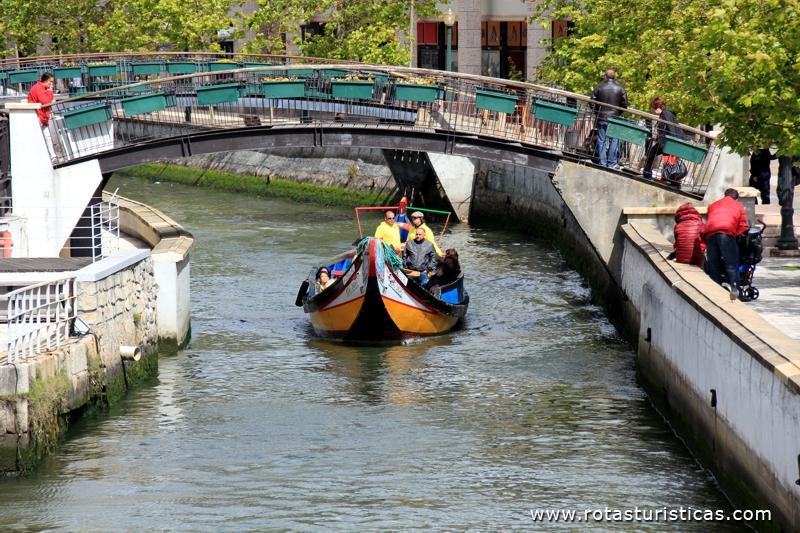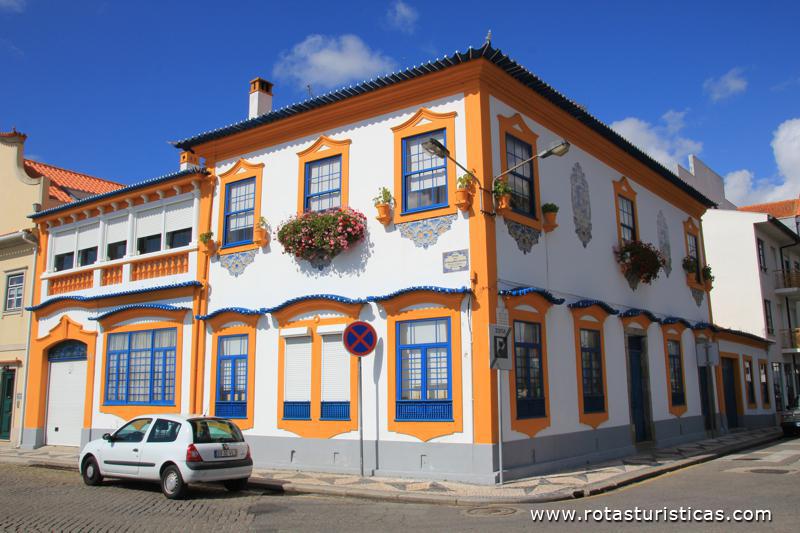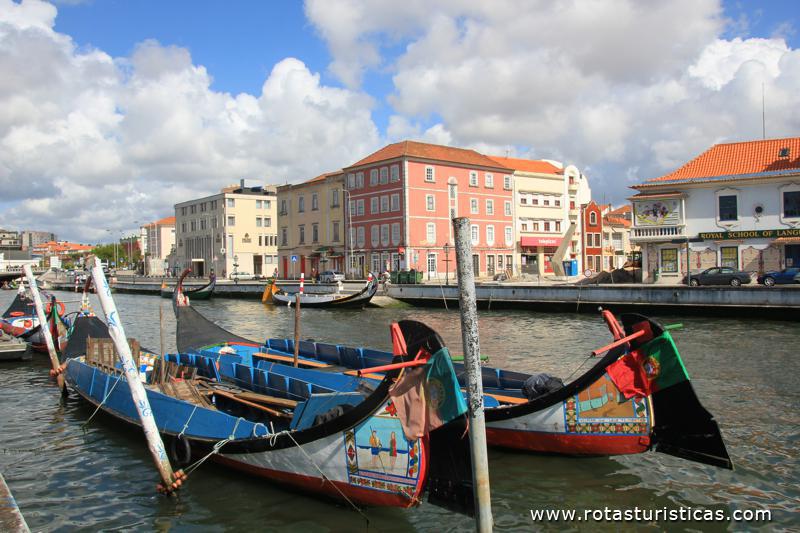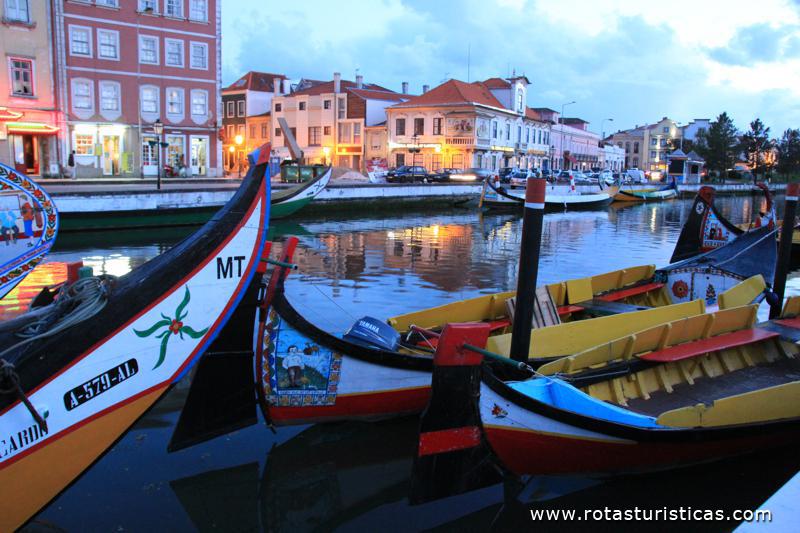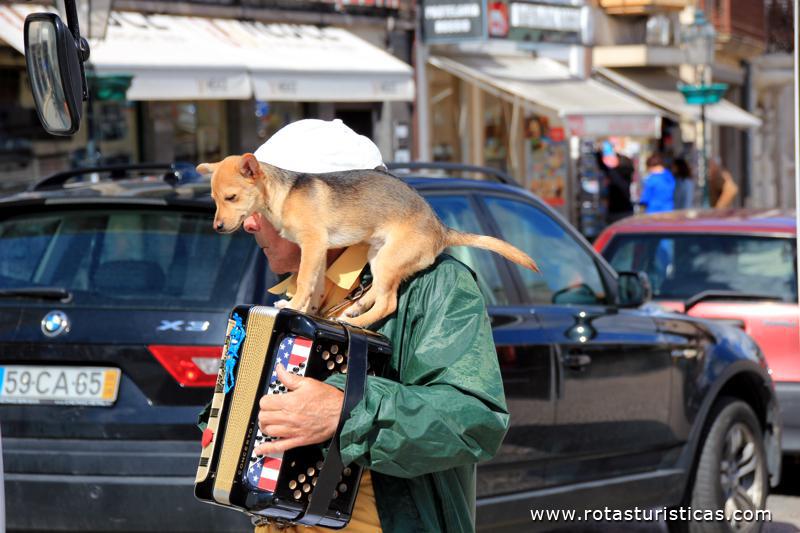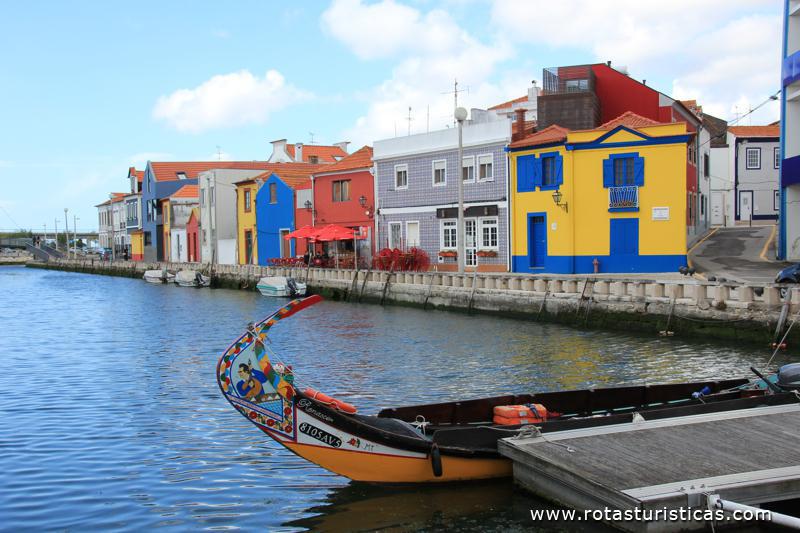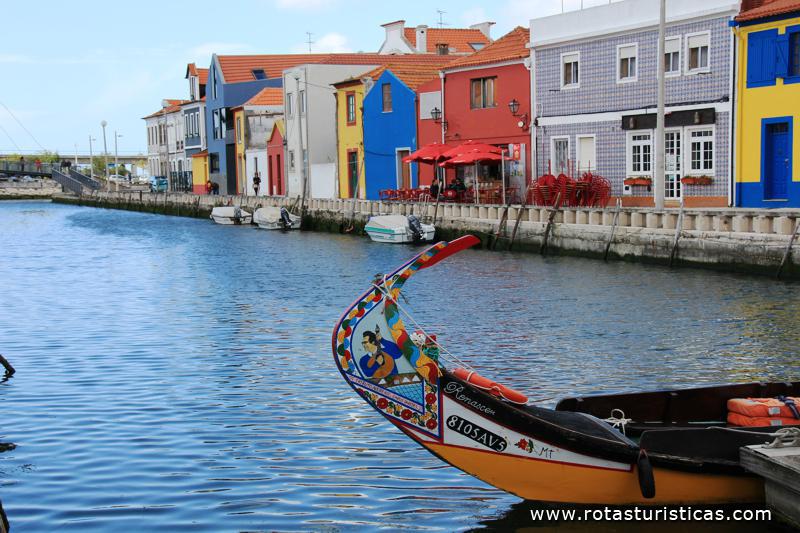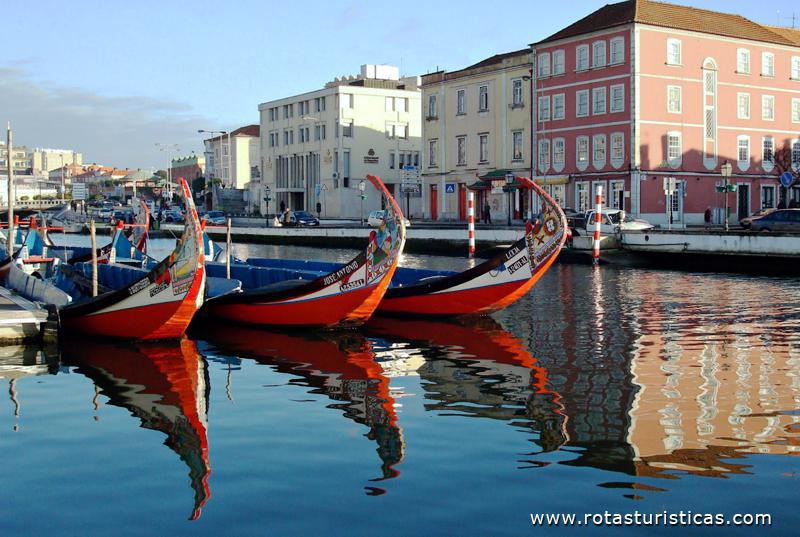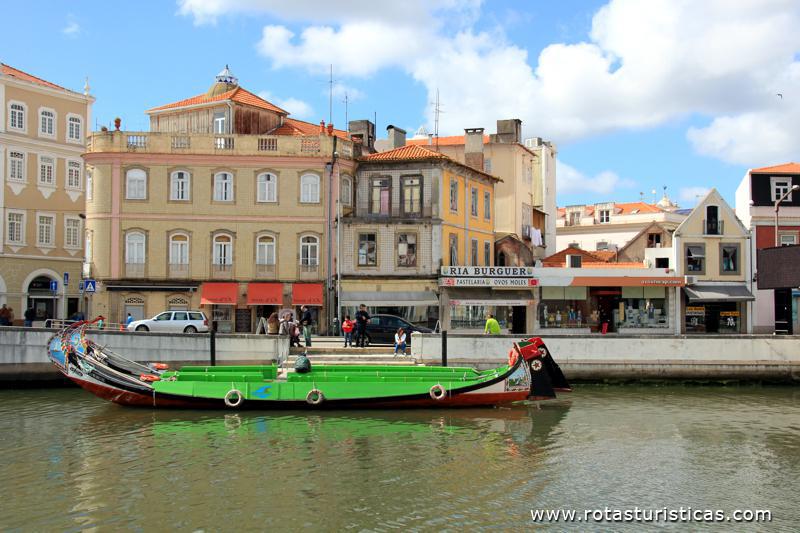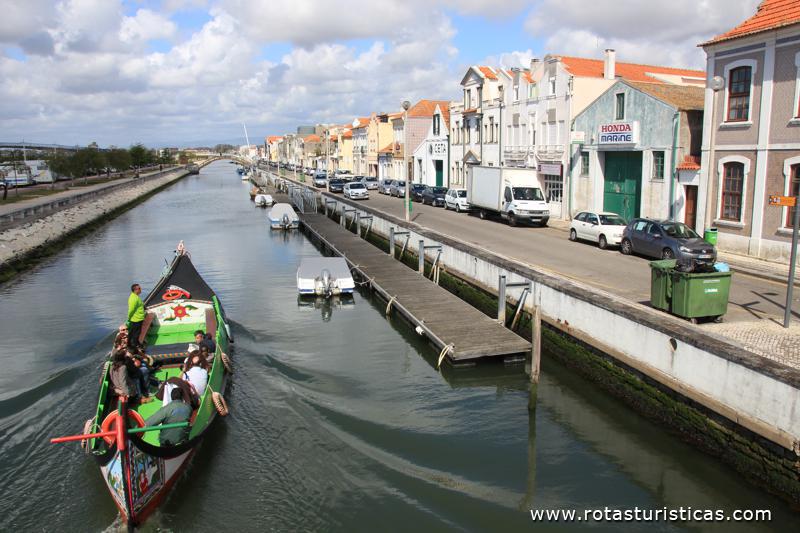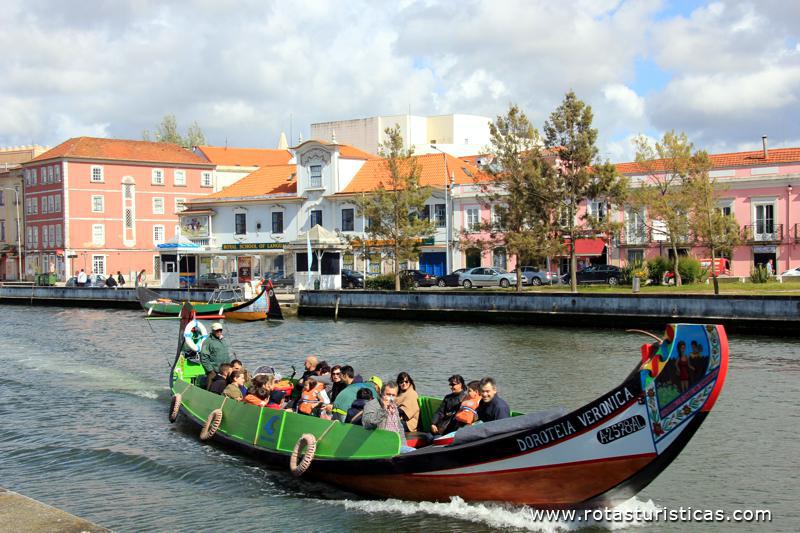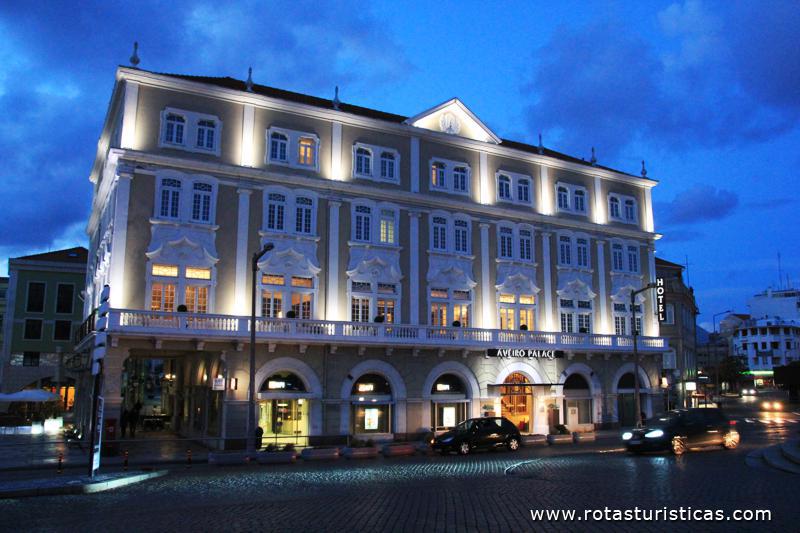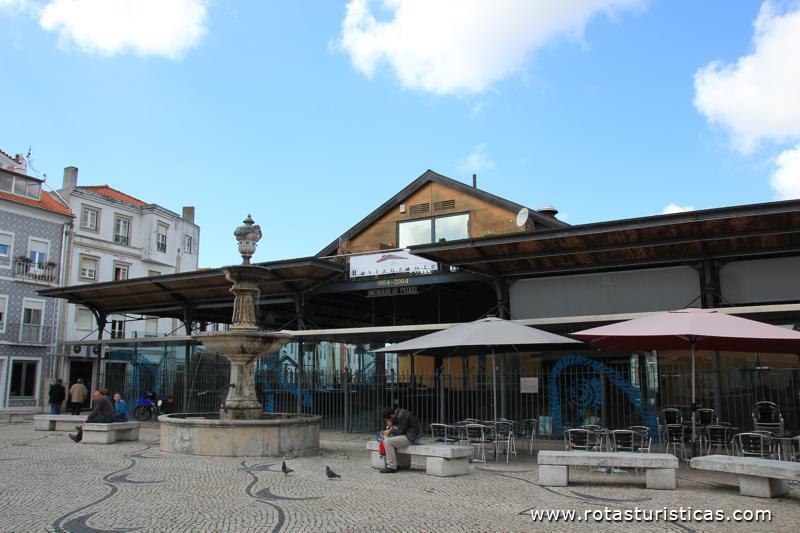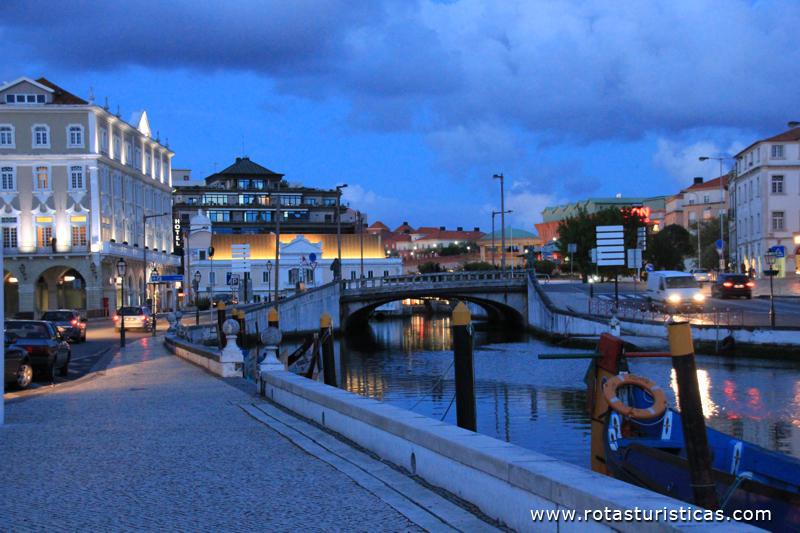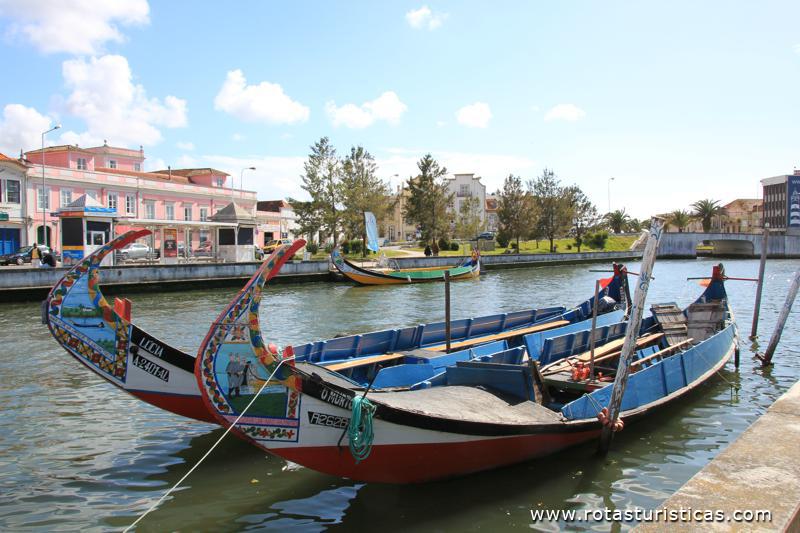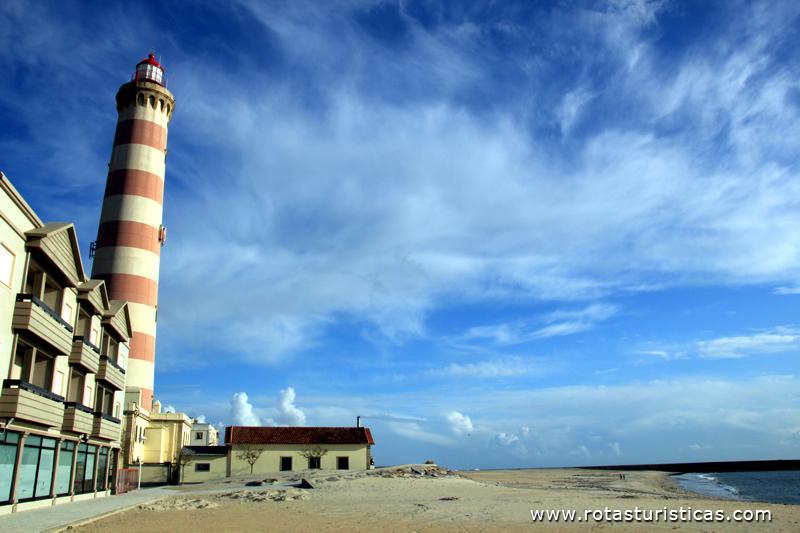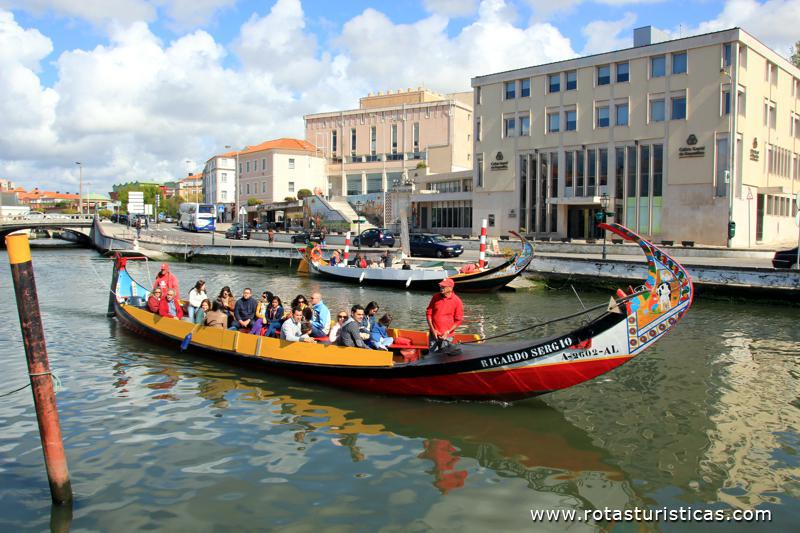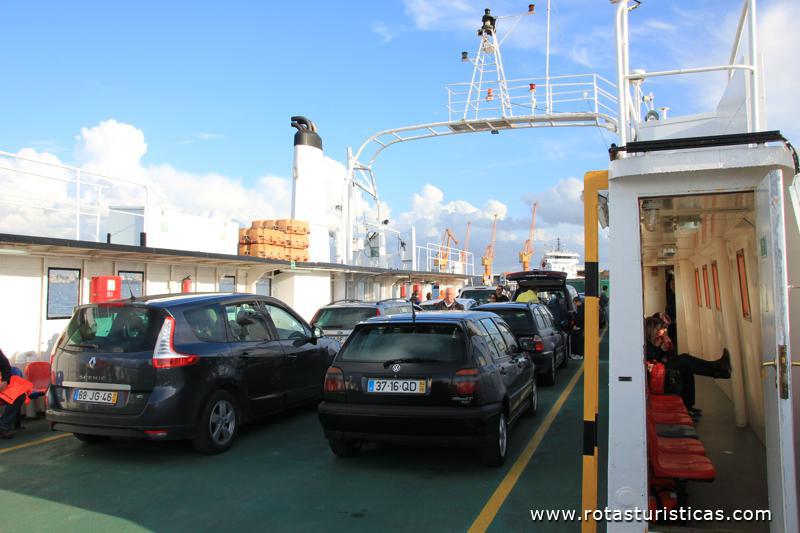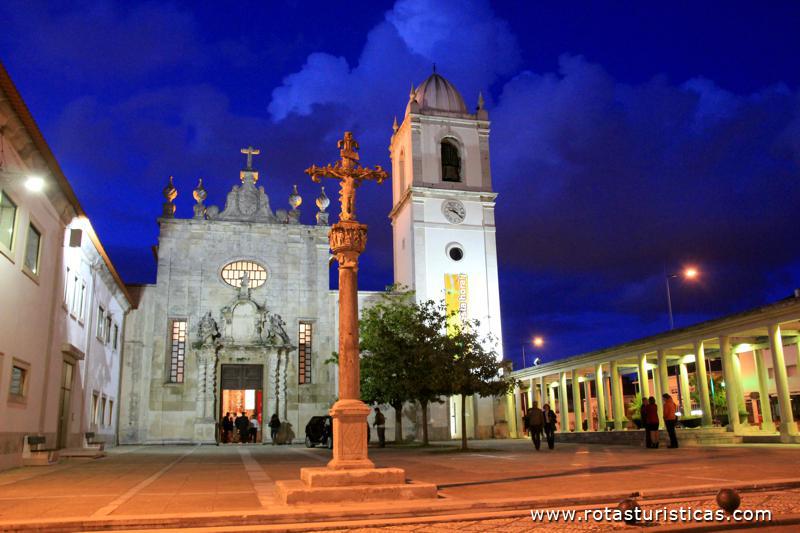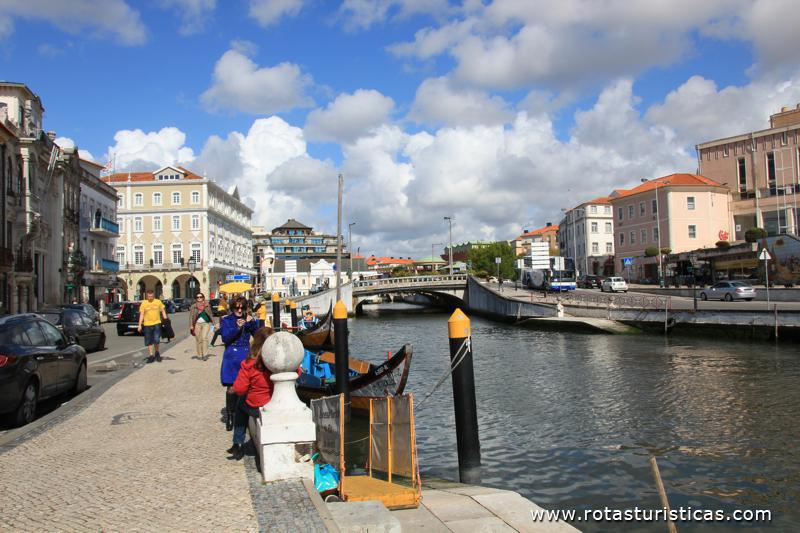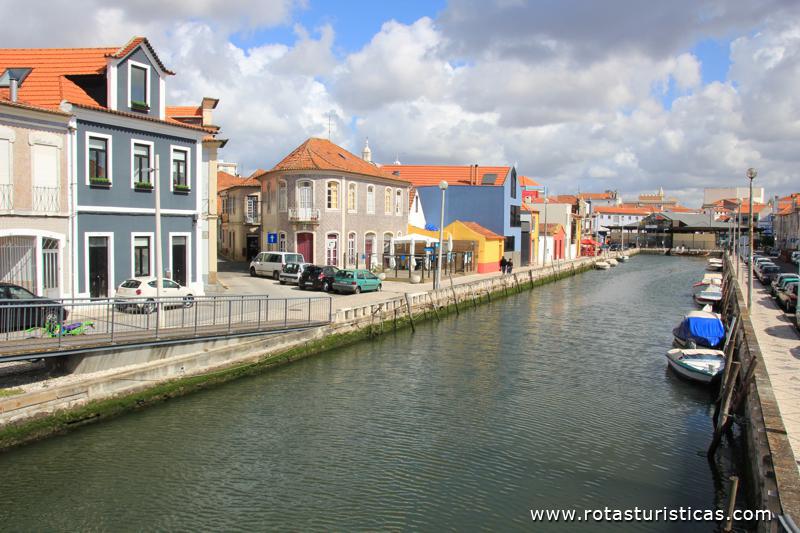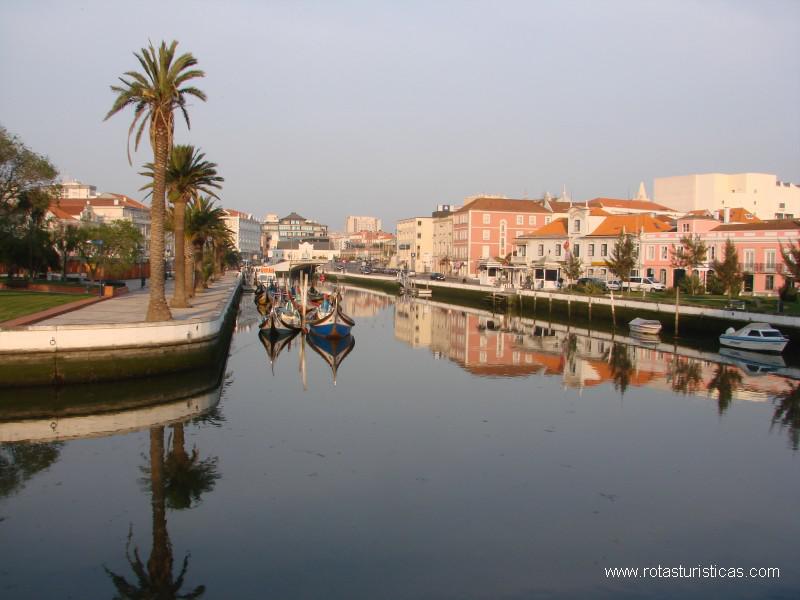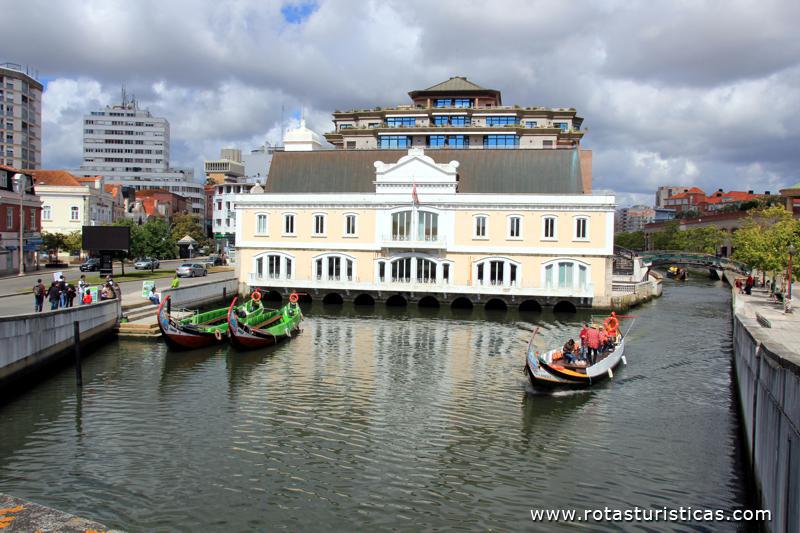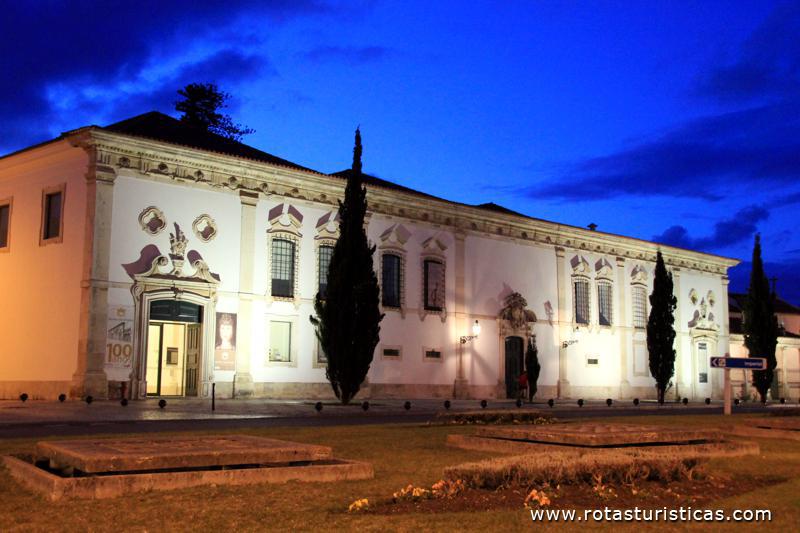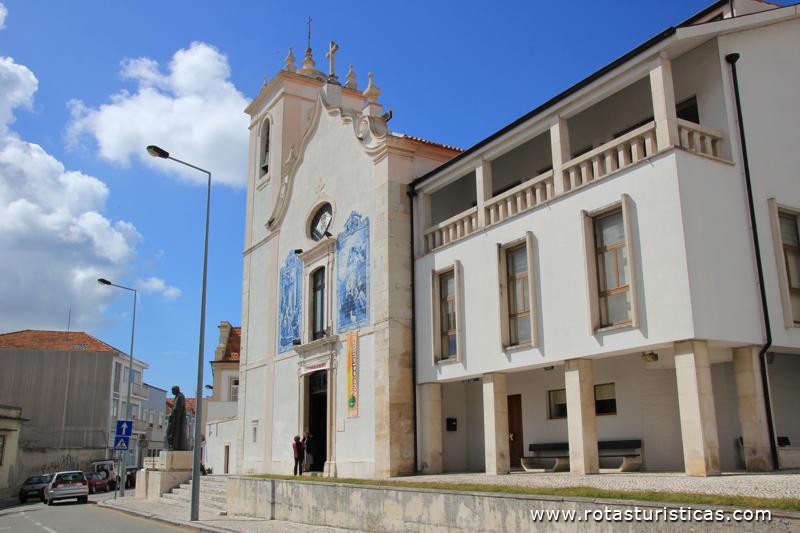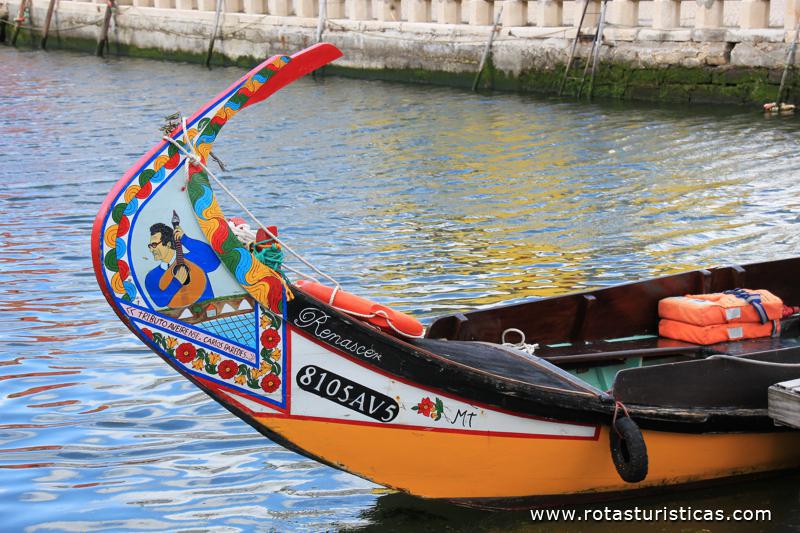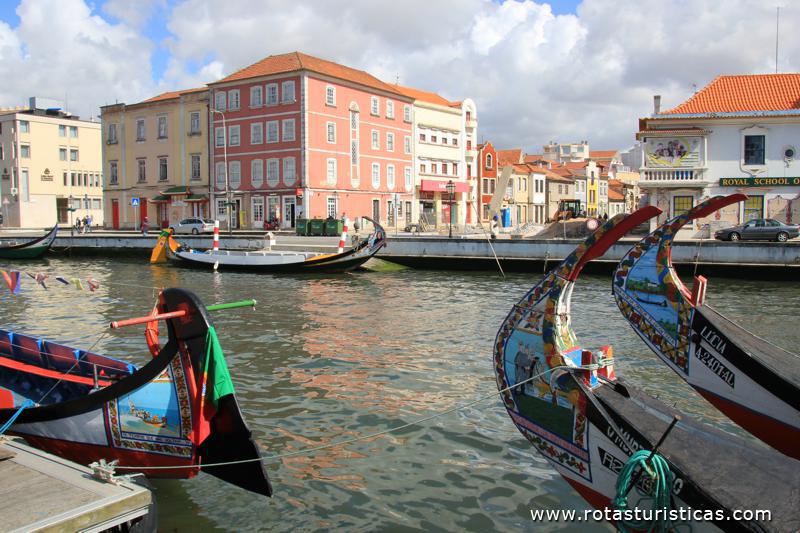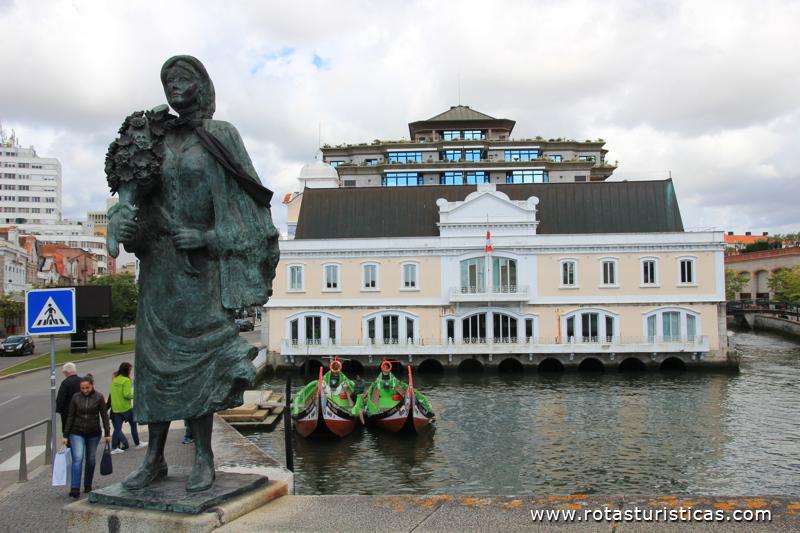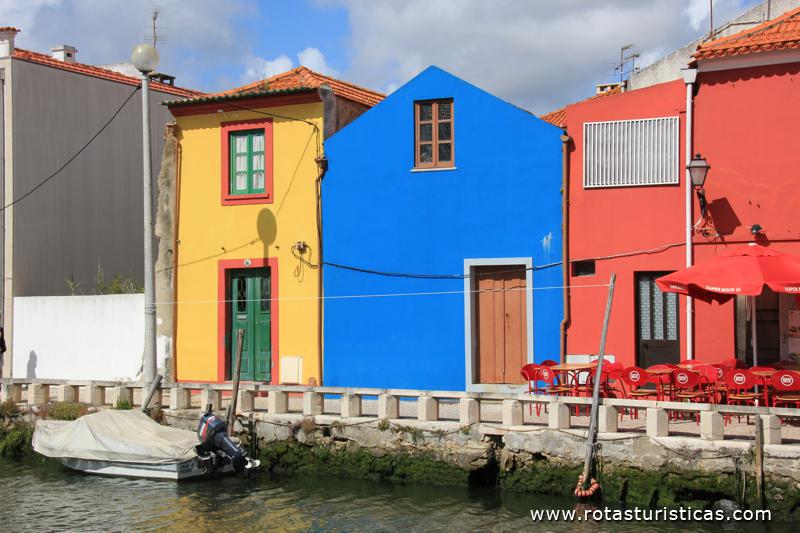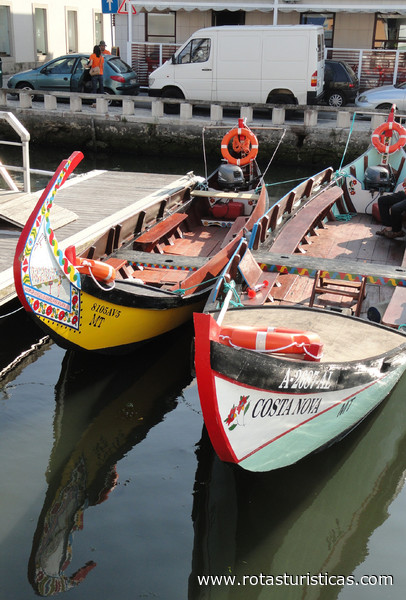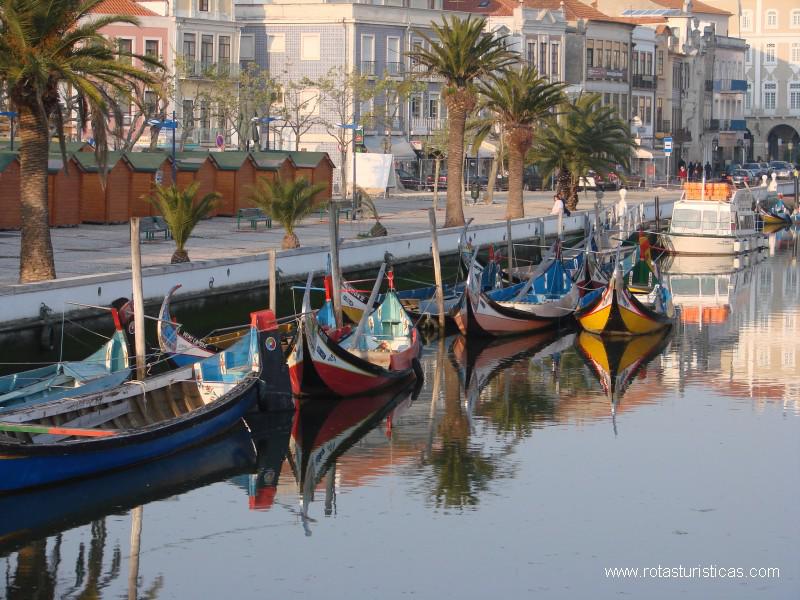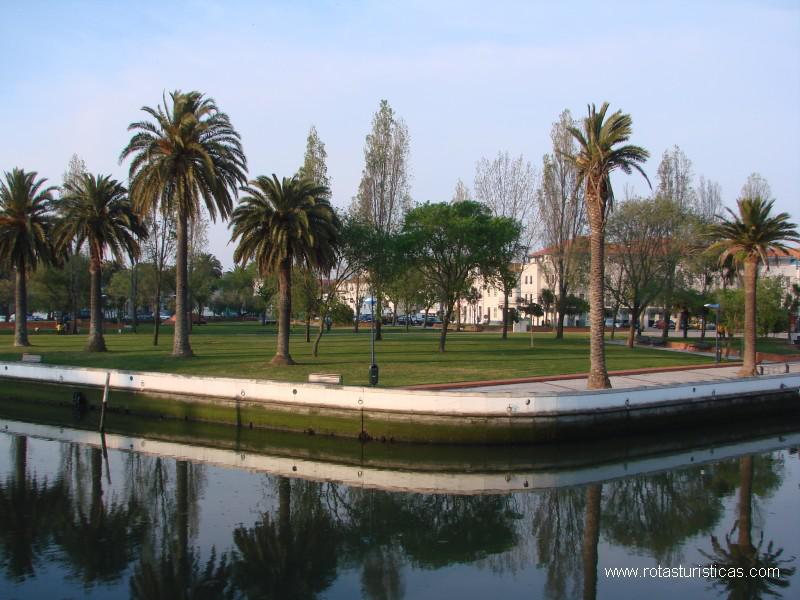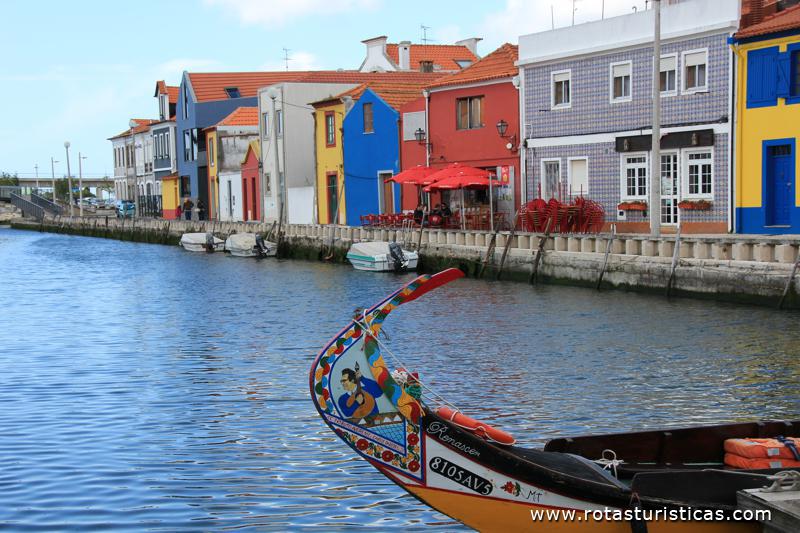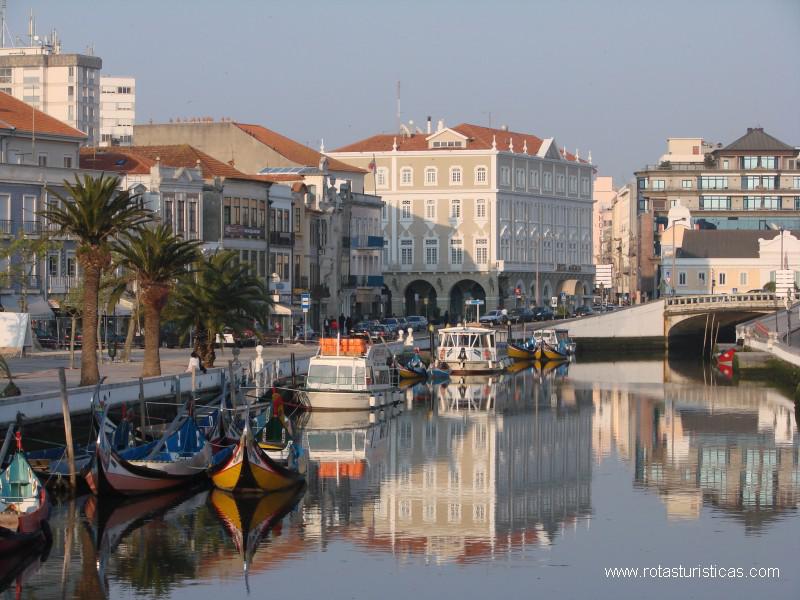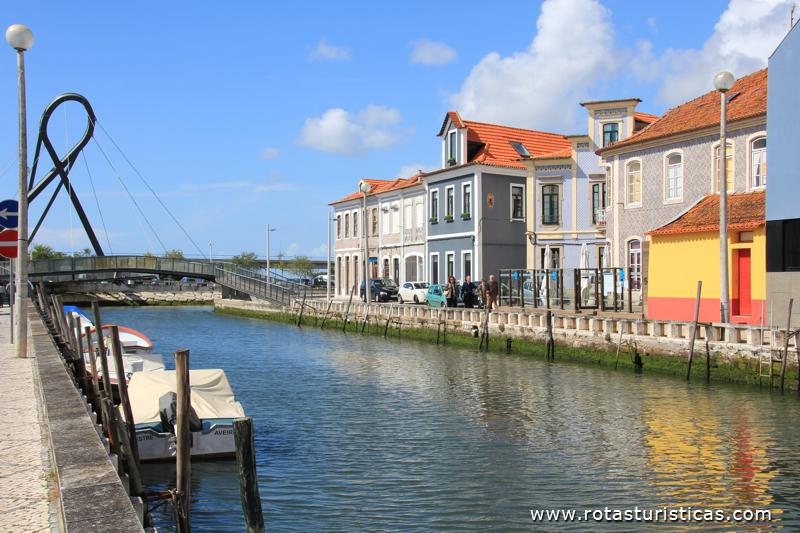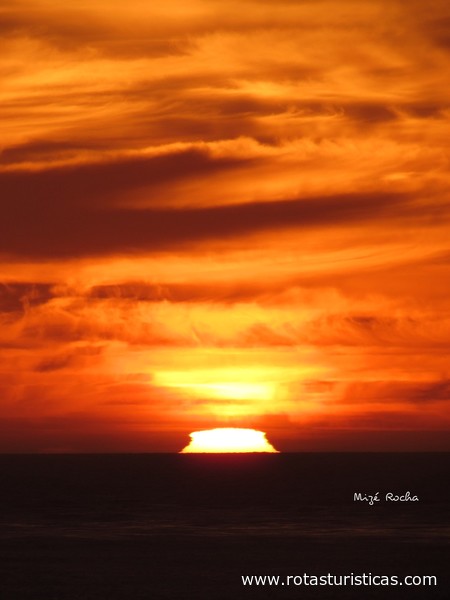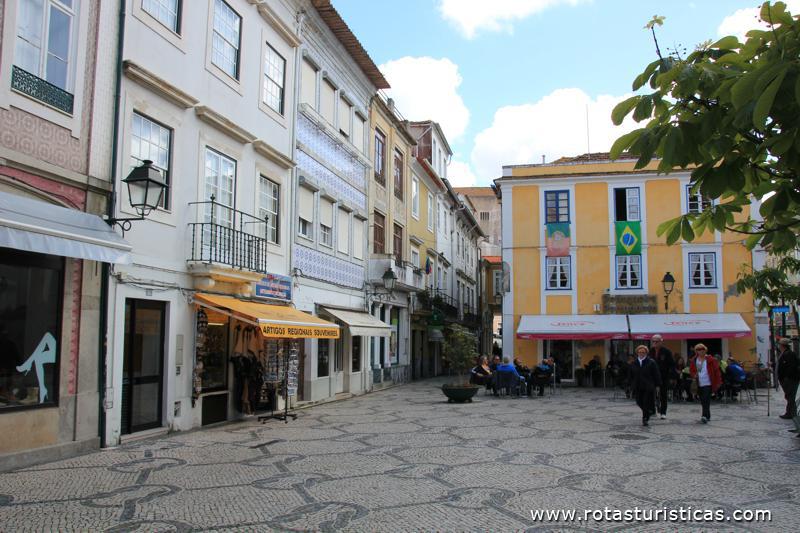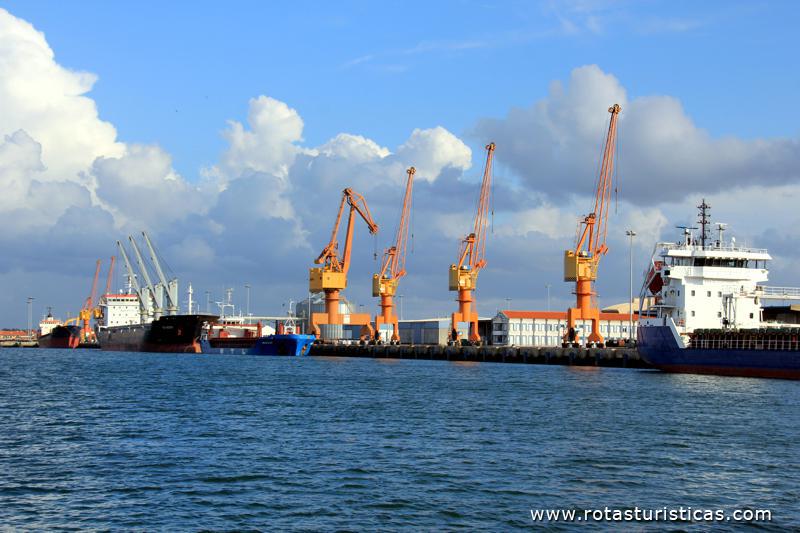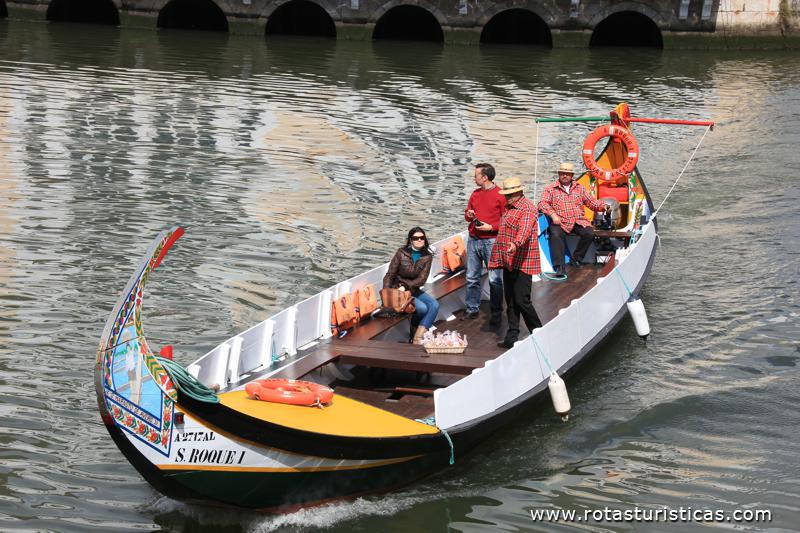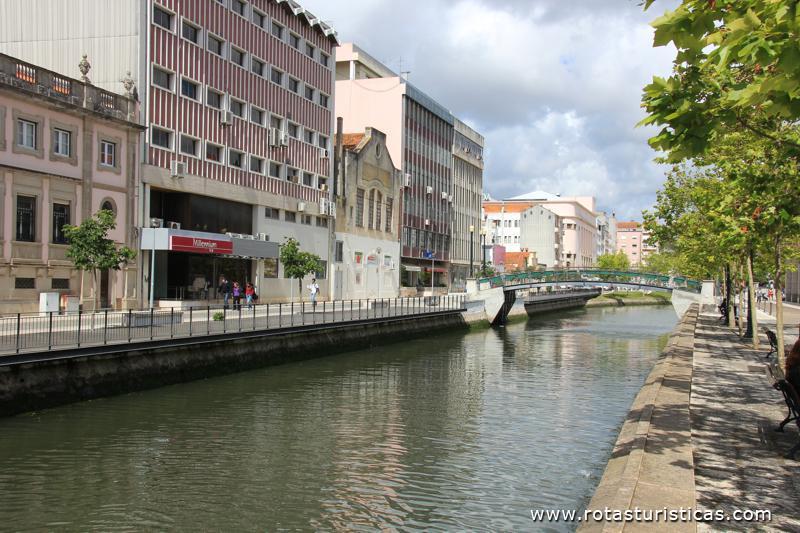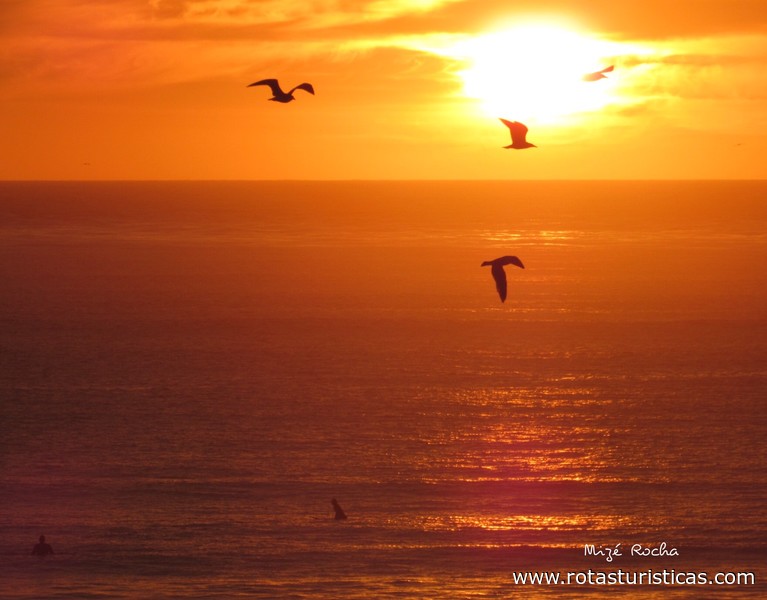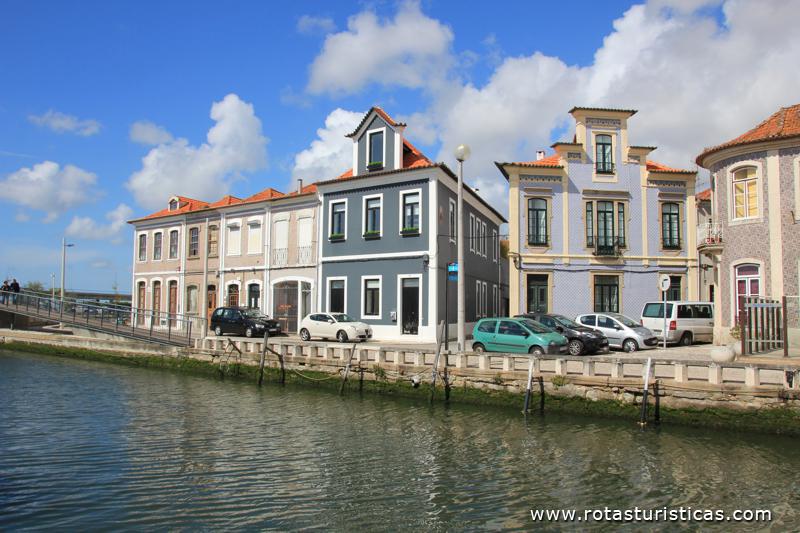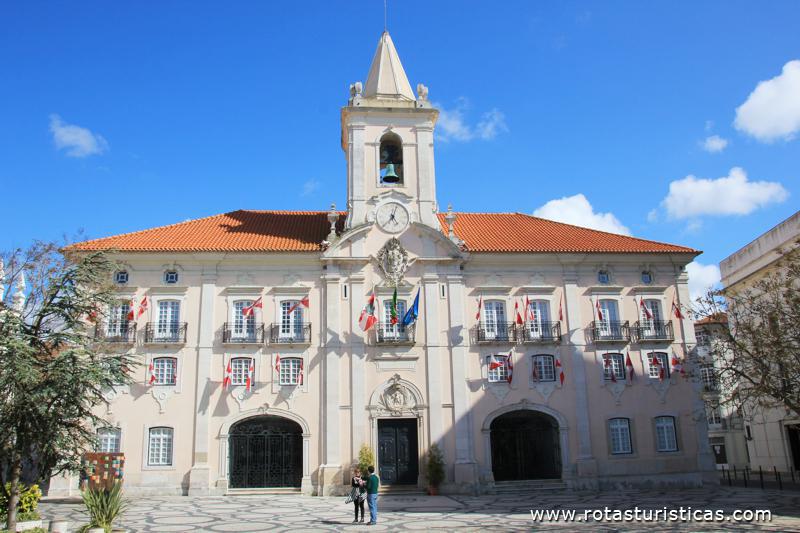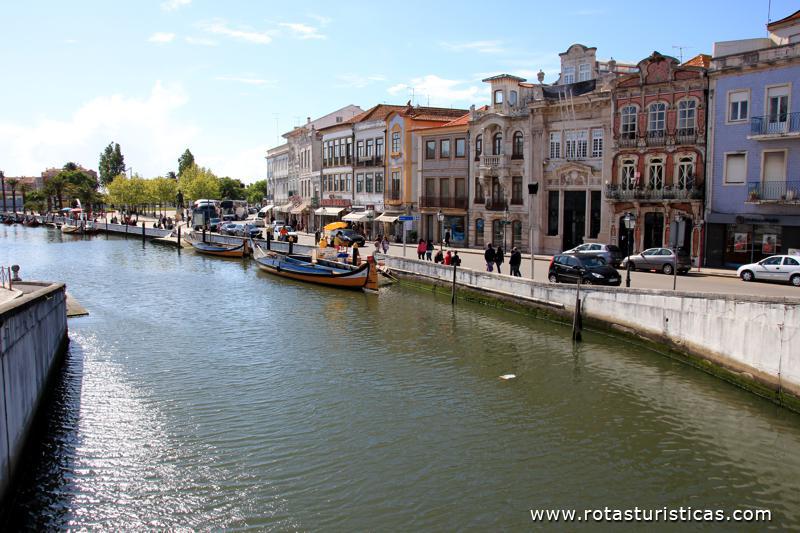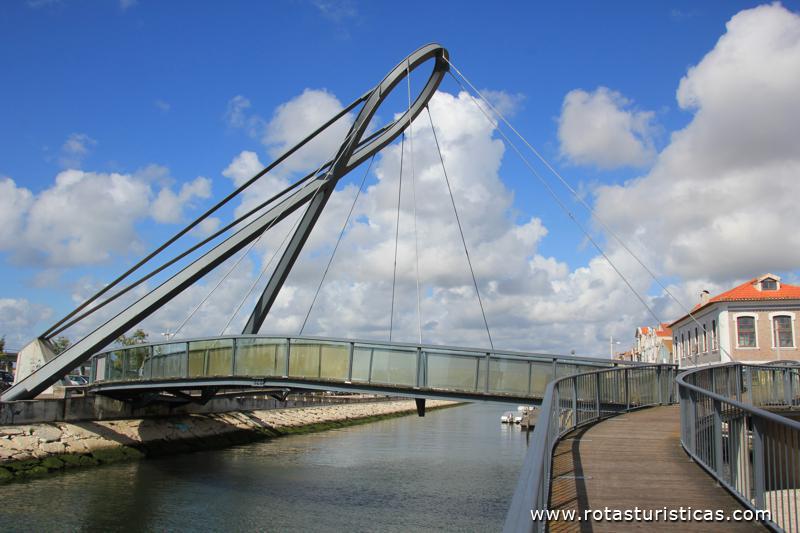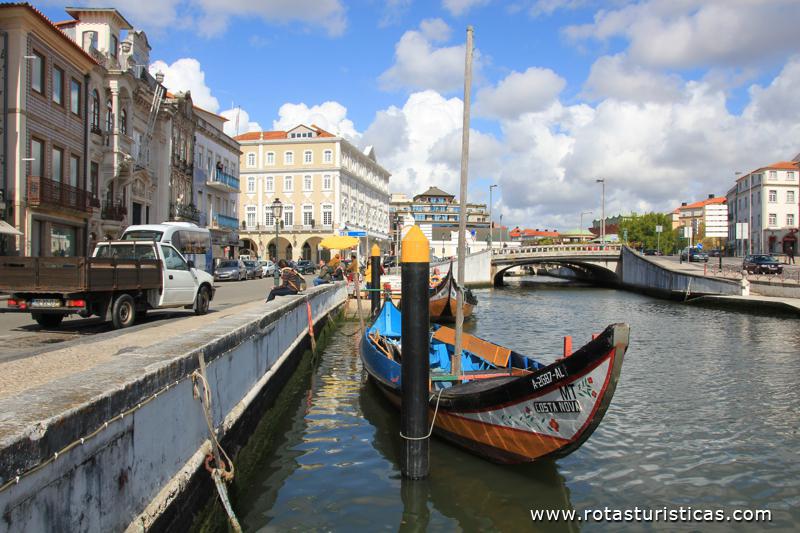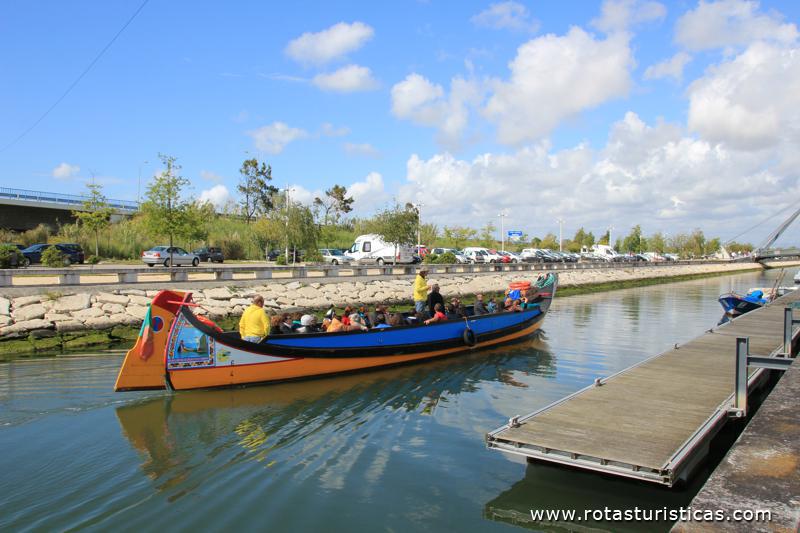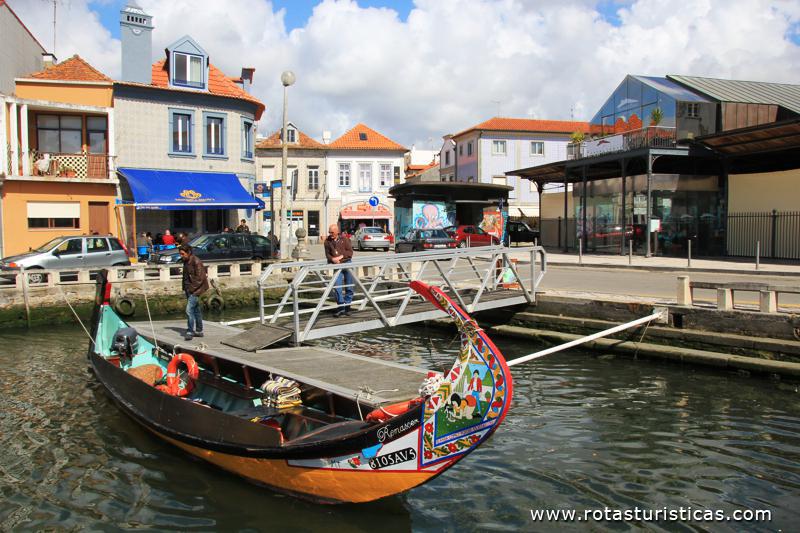Pictures of: Aveiro
Location map
Airports
Hotels and other Accommodation
Golf Courses
What to visit
Where to Eat
World Nomads
The Travel Insurance with the largest coverage

The Travel Insurance with the largest coverage

Aveiro
Aveiro is a Portuguese city, home to the homonymous district, located in the Central Region, sub-region of Baixo Vouga, with about 60 000 inhabitants. The urban perimeter is constituted by the parish of Glória and Vera Cruz (the original area of the city), extending further to Aradas, Cacia, Esgueira, São Bernardo and Santa Joana. The city is known as the "Portuguese Venice".
It is located about 55 km northwest of Coimbra and about 70 km south of Porto, being the main city of the sub-region of Baixo Vouga and the second city of the Center region, next to Coimbra.
It is the seat of a municipality with 197.58 km ² of area, subdivided into 10 parishes. The municipality is limited to the north by the municipality of Murtosa (either through Ria de Aveiro, or by land), to the northeast by Albergaria-a-Velha, to the east by Águeda, to the south by Oliveira do Bairro, to the southeast by Vagos and by Ílhavo (the boundaries with this latter county also being made by land and through the ria), and with a relatively narrow strip of coastline in the Atlantic Ocean, west, through the parish of São Jacinto. It is an important urban center, port, rail, university and tourist.
It is located about 55 km northwest of Coimbra and about 70 km south of Porto, being the main city of the sub-region of Baixo Vouga and the second city of the Center region, next to Coimbra.
It is the seat of a municipality with 197.58 km ² of area, subdivided into 10 parishes. The municipality is limited to the north by the municipality of Murtosa (either through Ria de Aveiro, or by land), to the northeast by Albergaria-a-Velha, to the east by Águeda, to the south by Oliveira do Bairro, to the southeast by Vagos and by Ílhavo (the boundaries with this latter county also being made by land and through the ria), and with a relatively narrow strip of coastline in the Atlantic Ocean, west, through the parish of São Jacinto. It is an important urban center, port, rail, university and tourist.
Tourism
The places to visit in the city of Aveiro are many and of great interest.
We suggest the use of BUGA (Free Use Bicycle of Aveiro) to walk around the city and to know some of these places ...
BUGA is an equipment designed to provide those who live in Aveiro or visit the city a pleasant and ecological way of knowing and walking. For a coin of one euro, which is revalued at the end of the tour, one can discover and visit Aveiro in a different way.
The number of available BUGAS and existing parks and the hours of operation of the system, allow its use in an intensive way, decongesting the city and making it less polluted.
The Forum of Aveiro is an example to follow in which to take advantage of the central space of the city concerns, in order to locate a diverse set of activities: shops, restaurants, cinemas, bookstore and use of underground space for parking.
The "municipal park" or "park of the city", in honor of the infant-regent D. Pedro, organized from 1862, thanks to the commitment of Manuel Firmino da Maia, starting from the area that belonged to the Franciscan convent of Santo António.
The gardens of the Rossio are a small space of leisure, more than anything geared towards the enjoyment of the green and accompanying the Central Canal, in an area that would hardly have any major occupation project.
Thus, it is a garden that offers the residents of the area and visitors in the center of the city a typical Aveiro environment, passing the movement to the side and allowing you to receive streams of light impregnated with salinity.
The lagoon zone commonly called the Ria de Aveiro, its islands and adjacent lands resulted from the sedimentation that began in this place of the coast in century X.
Over time, the action of the winds influencing the normal direction of the waves, gave rise to a coastal sedimentation. During the active tides, the combined action of wind and waves on a submerged sand bank led to the formation of the dunes. The maintenance of this vital space led to the Creation of the Natural Reserve of the São Jacinto Dunes.
Church of the Carmelites
São Gonçalinho Chapel
Church of São Domingos
Church of the Misericordia
Carmo Church
City Hall of Aveiro
Museum of Aveiro
Aveiro Municipal Library
Captaincy of Aveiro
We suggest the use of BUGA (Free Use Bicycle of Aveiro) to walk around the city and to know some of these places ...
BUGA is an equipment designed to provide those who live in Aveiro or visit the city a pleasant and ecological way of knowing and walking. For a coin of one euro, which is revalued at the end of the tour, one can discover and visit Aveiro in a different way.
The number of available BUGAS and existing parks and the hours of operation of the system, allow its use in an intensive way, decongesting the city and making it less polluted.
The Forum of Aveiro is an example to follow in which to take advantage of the central space of the city concerns, in order to locate a diverse set of activities: shops, restaurants, cinemas, bookstore and use of underground space for parking.
The "municipal park" or "park of the city", in honor of the infant-regent D. Pedro, organized from 1862, thanks to the commitment of Manuel Firmino da Maia, starting from the area that belonged to the Franciscan convent of Santo António.
The gardens of the Rossio are a small space of leisure, more than anything geared towards the enjoyment of the green and accompanying the Central Canal, in an area that would hardly have any major occupation project.
Thus, it is a garden that offers the residents of the area and visitors in the center of the city a typical Aveiro environment, passing the movement to the side and allowing you to receive streams of light impregnated with salinity.
The lagoon zone commonly called the Ria de Aveiro, its islands and adjacent lands resulted from the sedimentation that began in this place of the coast in century X.
Over time, the action of the winds influencing the normal direction of the waves, gave rise to a coastal sedimentation. During the active tides, the combined action of wind and waves on a submerged sand bank led to the formation of the dunes. The maintenance of this vital space led to the Creation of the Natural Reserve of the São Jacinto Dunes.
Church of the Carmelites
São Gonçalinho Chapel
Church of São Domingos
Church of the Misericordia
Carmo Church
City Hall of Aveiro
Museum of Aveiro
Aveiro Municipal Library
Captaincy of Aveiro
Gastronomy
The gastronomic traditions of Aveiro are due, in large part, to the sugary palates of those who, over time, have been cooking the recipes that now do the delights of residents and visitors.
An exemplary case is that of the nuns of the Convent of Jesus, who left a very rich and varied legacy.
We now have the typical soft eggs, a symbol of Aveiro par excellence, served in small wooden kitchens decorated with colorful paintings with regional themes or with host coating imitating marine shapes.
Going a bit further to the Aveirense confectionery, we find other legacies of religious convents in the region to also make "mouth watering". As for example: "raivas", eggs in thread, sweet chestnuts, twenty-four hour cakes, wet slices, nun's bellies.
"Ovos moles" is a typical sweet from the city of Aveiro. It is a regional, traditional pastry from Aveiro, whose original formula and method of production is due to the nuns of the various convents existing there until the 19th century - Dominicans, Franciscans and Carmelites.
Extinct the convents, the manufacture of the soft eggs was maintained, thanks to the educated ladies of the mentioned nuns.
No one doubts that the most famous sweet of the region of Aveiro is the "Pão de Ló de Ovar", one of the most famous local specialties.
The lovers of the good table can enjoy meat and fish dishes, especially the latter, fruit of the fishermen who populated, and still populate, the city.
Let's start with the fish recipes. The suggestions are: the eel stew or the pickled eels, the streak in pita sauce, the mussel kebabs and the stews of various fish from the estuary and the sea.
As for the meats, you can choose the lamb to the lampantana (roasted in the squash of black clay), the roasted suckling pig, the chanfana of lamb or goat, the chorizo with grelos or some rojões.
An exemplary case is that of the nuns of the Convent of Jesus, who left a very rich and varied legacy.
We now have the typical soft eggs, a symbol of Aveiro par excellence, served in small wooden kitchens decorated with colorful paintings with regional themes or with host coating imitating marine shapes.
Going a bit further to the Aveirense confectionery, we find other legacies of religious convents in the region to also make "mouth watering". As for example: "raivas", eggs in thread, sweet chestnuts, twenty-four hour cakes, wet slices, nun's bellies.
"Ovos moles" is a typical sweet from the city of Aveiro. It is a regional, traditional pastry from Aveiro, whose original formula and method of production is due to the nuns of the various convents existing there until the 19th century - Dominicans, Franciscans and Carmelites.
Extinct the convents, the manufacture of the soft eggs was maintained, thanks to the educated ladies of the mentioned nuns.
No one doubts that the most famous sweet of the region of Aveiro is the "Pão de Ló de Ovar", one of the most famous local specialties.
The lovers of the good table can enjoy meat and fish dishes, especially the latter, fruit of the fishermen who populated, and still populate, the city.
Let's start with the fish recipes. The suggestions are: the eel stew or the pickled eels, the streak in pita sauce, the mussel kebabs and the stews of various fish from the estuary and the sea.
As for the meats, you can choose the lamb to the lampantana (roasted in the squash of black clay), the roasted suckling pig, the chanfana of lamb or goat, the chorizo with grelos or some rojões.
Weather
The Köppen international climate classification system, which is based on the monthly and annual values of the average daily temperature of the air and precipitation (ie, the temperature of the coldest month and the warmest month and the precipitation of the month plus humid and the driest month). ). After analyzing the climatic data necessary for the Köppen classification and the Csb type, it was verified that it is a temperate climate (mesothermal) with rainy winter and dry summer (Cs), being the type (a), where the average temperature of the air in the hottest month is higher than 22 ° C.
The main climatic characteristics of Aveiro are summarized below:
- Seasons of the year: well maintained, with a hot summer, a cold winter and a cooler spring than autumn.
- Average temperature: annually, it varies from 15.5ºC, fluctuating between 16.8ºC in 1997 and 14.4ºC in 1986, with the hottest month (August 20.3ºC), fluctuating between 22.0ºC in 2005 and 18.6ºC in 1988. The month (January 10.2ºC), varying between 12.1ºC and 8.7ºC in 1998 and 1985, respectively.
-Excess temperature: the absolute maximum was 39.0 ° C in 1993; The absolute minimums have already reached 3.5ºC below zero. 29 days were recorded with a minimum of 0ºC.
The main climatic characteristics of Aveiro are summarized below:
- Seasons of the year: well maintained, with a hot summer, a cold winter and a cooler spring than autumn.
- Average temperature: annually, it varies from 15.5ºC, fluctuating between 16.8ºC in 1997 and 14.4ºC in 1986, with the hottest month (August 20.3ºC), fluctuating between 22.0ºC in 2005 and 18.6ºC in 1988. The month (January 10.2ºC), varying between 12.1ºC and 8.7ºC in 1998 and 1985, respectively.
-Excess temperature: the absolute maximum was 39.0 ° C in 1993; The absolute minimums have already reached 3.5ºC below zero. 29 days were recorded with a minimum of 0ºC.
Other tourist destinations in:
Portugal
Portugal
Other world tourist destinations
Why to book with TOURISTIC ROUTES
The best prices
Our partnerships with the world´s largest operators offer research on the best market prices.
More options
At Rotas Turisticos you can book the hotel, buy the air ticket, book the transfer from the airport to the hotel and vice versa, book the local excursions, rent the car, take travel insurance and consult the places to visit and where to go.
Holiday Tips & Destinations
Hundreds of holiday destinations with all the options that allow you to easily choose the destination that best suits your dream vacation.
TOURISTIC ROUTES
Links

